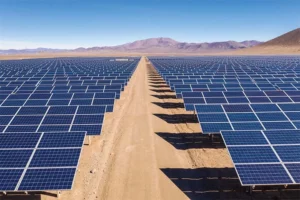In a major step towards green energy, the U.S. government has recently updated its solar development strategy.
This move significantly increases the land available for solar projects. A total of 22 million acres across the western United States are now designated for solar energy use.
This decision marks a key change from previous policies.
The Bureau of Land Management (BLM), in collaboration with the Department of Energy’s National Renewable Energy Laboratory, led this initiative.
They identified these areas as optimal for solar power generation. The focus was on lands near existing or planned power lines, avoiding environmentally sensitive areas.
In addition, this approach aims to make solar project setup easier and more efficient.

Initially, the 2012 Western Solar Plan covered six states. These included Arizona, California, Colorado, Nevada, New Mexico, and Utah.
The recent update expands this to five more states. Idaho, Montana, Oregon, Washington, and Wyoming are now part of the plan.
This expansion reflects the growing importance of solar energy across different regions.
Advancing Sustainable Energy
The Solar Energy Industries Association (SEIA) has praised this move. They highlight its significance in balancing energy needs with environmental preservation.
Currently, federal lands open to oil and gas dwarf those available for solar. This update seeks to address that disparity, supporting the U.S.’s renewable energy goals.
Under President Biden’s administration, the BLM has approved 47 clean energy projects. These include wind, solar, and geothermal energy sources.
Combined, these projects can power over 3.5 million homes. This aligns with the national goal to achieve net-zero emissions in the power sector by 2035.
However, this development is a critical step in the U.S.’s journey towards a sustainable energy future.
It not only shows commitment to renewable energy but also ensures a more balanced approach to national energy resources.

